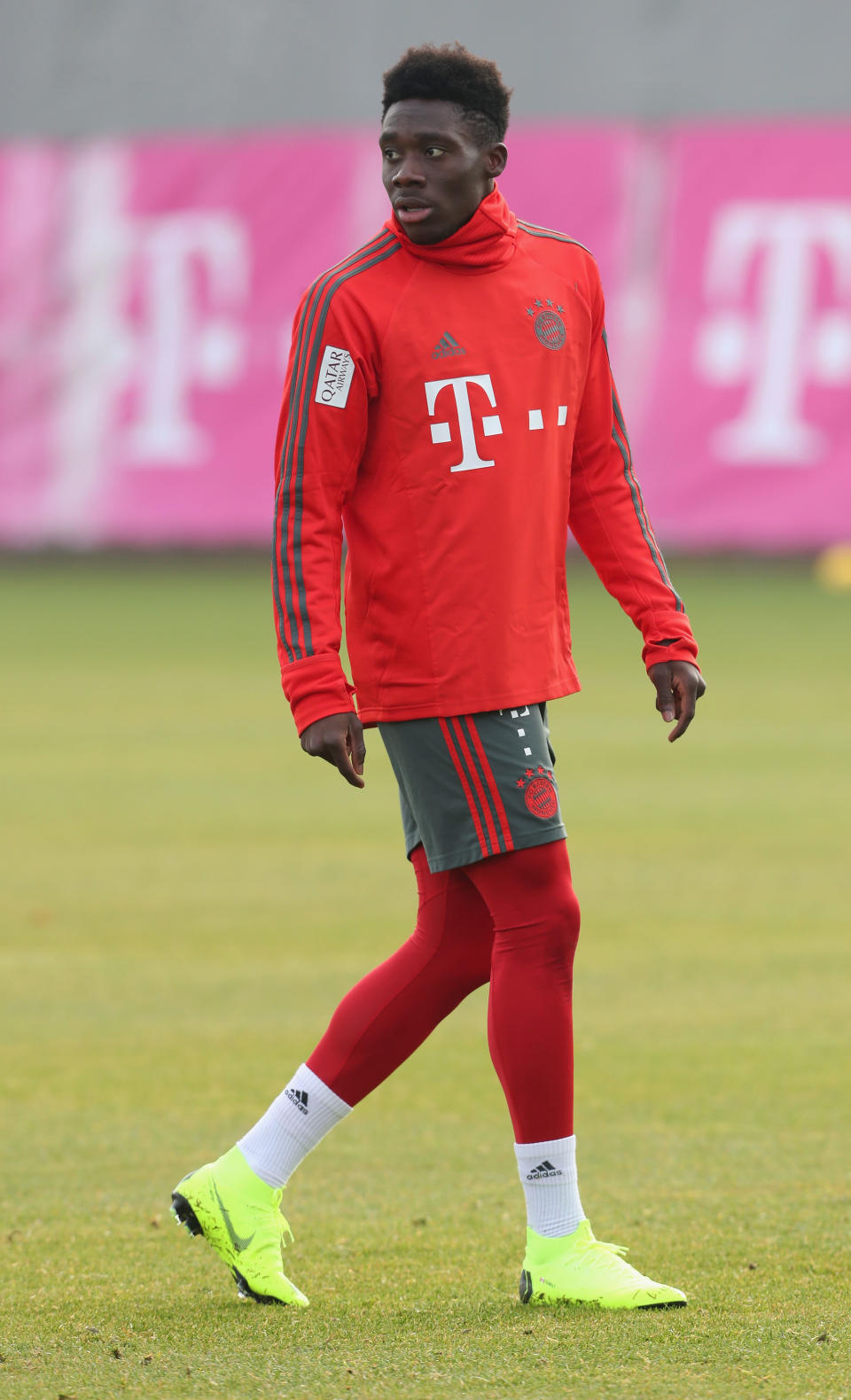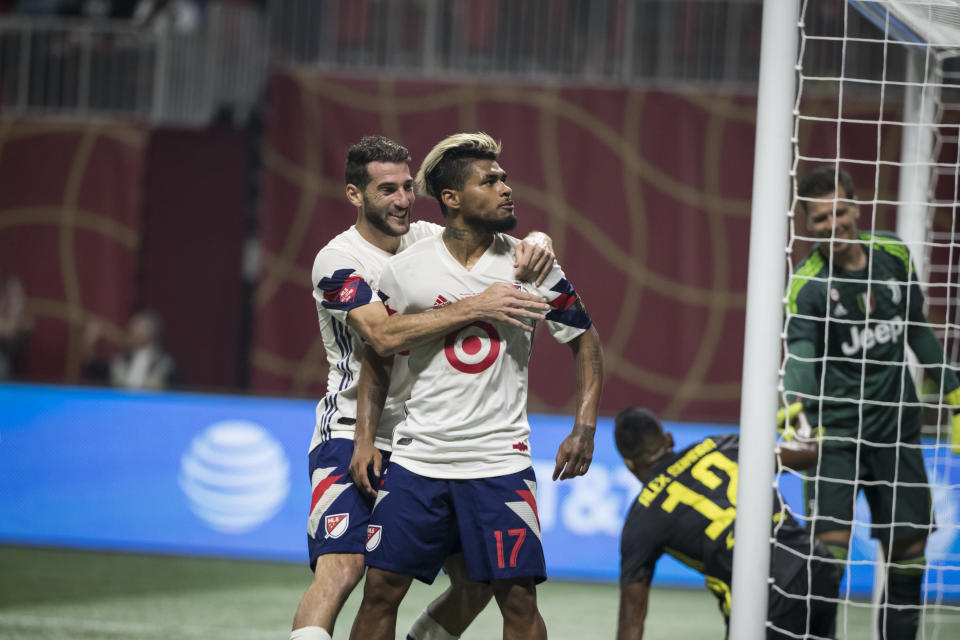Don Garber says MLS must become selling league, has 'no doubt' it can expand beyond 28 teams
ATLANTA — For most of its 23 seasons, Major League Soccer resisted the urge to sell its top players when wealthy European clubs came calling. That has changed over the last few years, however, with the multimillion dollar transfers of teenage standouts Tyler Adams and Alphonso Davies the most obvious recent examples.
If longtime MLS commissioner Don Garber gets his way, the trend will not just continue in the years to come, but accelerate. “We need to become more of a selling league,” Garber said flatly during his annual State of the League address, on the eve of Saturday’s MLS Cup final between Atlanta United and the Portland Timbers [8 p.m. ET, FS1]. He admitted that his thinking on the subject has evolved over time.
“As a person who has been selling this league for nearly 20 years, I’ve always believed that you needed to have the players that resonated in your market to be those that could be aspirations for young kids who are peeking through the fence when they see them train.
“We all need to get used to the fact that in the world of global soccer, players get sold,” Garber continued. “We have been buying for so long, and as we’ve gone through the analysis, it’s hard to justify that investment and the investment that we have to make in player development. We’ve got to have something that turns this model around or else it’s going to be unsustainable. When I see Alphonso Davies get sold for what could be $22 million, that’s a positive thing for the league.”
Garber discussed a host of other issues during the nearly hour-long session. Here are some of the biggest takeaways:

MLS Commissioner Don Garber delivered his annual State of the League Address on the eve of Saturday’s MLS Cup in Atlanta. (Jason Getz/USA TODAY)
Garber has “no doubt” MLS can expand beyond 28 teams
MLS has more than doubled in size since 2004. It will grow to 24 teams next year with the arrival of FC Cincinnati. Miami and Nashville are already locked in as teams 25 and 26, with the plan to continue to grow until the league reached 28 teams before deciding to add any more. Suddenly, further growth sounds like a forgone conclusion.
“This is a big country,” Garber said. “There has been so much that’s gone on over the last decade or more in this sport, that has been empowering a lot of the interest in cities across the U.S.and Canada. Every time that we evaluate how large we want the league to be, it really is in the context of what we think the country can support.
The NFL has 32 teams. The National Hockey League announced this week that its 32nd club would begin play in 2021 in Seattle. Both the NBA and Major League baseball have 30 franchises.
“We’re going to have to decide if we want to go forward beyond 28 teams,” Garber said. “That’s a discussion that is taking place. We’ll begin to introduce the subject at our board meeting in the middle of next week. I don’t expect or anticipate there will be an announcement coming out of that, but there’s no doubt in my mind that we can support having more than 28 teams in Major League Soccer”
The league is sick of losing its academy products to Europe for nothing
For every Adams or Davies who graduates from talented academy prospect to bona-fide first-team star, there’s a player who instead decides to bypass MLS for a European club. Schalke’s Weston McKennie, who spent his formative years in FC Dallas’ first-class youth system, is one example. U.S. under-20 national team star Alex Mendez, a former LA Galaxy academy standout who is also headed to the German Bundesliga, with Freiburg, is another. Both MLS clubs spent heavily on their development, only to watch them leave for without any return on that investment.
Most places around the world, youth teams are compensated by the buying club. In Davies’ case, the Vancouver Whitecaps actually sent some of the money they received from Bayern Munich to Davies’ former youth team in Edmonton. But that’s Canada. In the United States, where 20 of the 23 MLS teams are based, there are no so-called solidarity payments at all.
“This is a big issue for our league,” Garber said. “That’s something we’ve got to wrap our collective minds around and figure out how do we manage that in a way that justifies our owners investing — this year north of $100 million — outside of our first-team rosters.
“We are not, as a country, participants in solidarity and training compensation. I think that probably has to change,” Garber added. “We’ve got to find a way that if that’s going to happen, how do we at least get compensated for it? Or I don’t know how we can justify making the sorts of investments that we’ve been making.”

Garber now agrees with Klinsmann on the value of competition
Back in 2014, Garber issued a strong rebuke of then-U.S. national team coach Jurgen Klinsmann, who suggested (quite reasonably, it must be said) that as far as the USMNT was concerned, it was better for top Americans like Jozy Altidore, Michael Bradley and Clint Dempsey to fight for minutes in Europe than return to MLS, where the level of play was significantly lower and playing time was essentially guaranteed.
Garber’s thinking on that seems to have evolved as well. Here’s what he said when asked about concerns that the recent influx of talented young foreigners — thanks to MLS’s increased spending on rosters — was preventing their domestic counterparts from gaining valuable on-field experience.
“I had a pretty public confrontation with Jurgen Klinsmann about his views about what needed to happen to make our clubs more competitive, right? Many years later, as I look at the competitiveness of our teams, we need to have the kinds of clubs that exist all around the world where you’ve got to really earn your way onto that field as a young player,” he said. “You need to earn the money that is now available to anybody.”

All-Star game format won’t change in 2019
Don’t expect MLS to revert to the East versus West format the league used during its early years any time soon. As the circuit has grown and more top-end players have arrived, so too have calls for an MLS-only All-Star game. MLS’s best have faced off against an international club since 2005, with some notable successes. Over the last dozen years, the home team has defeated the likes of Bayern and Chelsea (twice) in the showpiece event. In the most recent edition back in August, the MLS All-Stars drew with Juventus in Atlanta only to lose the match on penalties.
“I think it’s worked pretty well,” Garber said. “Some of the more exciting games we’ve ever had have been against international clubs. Many of those games we won. I was here obviously this summer, the crowd we had and the excitement around the game, our All–Star Game, was stupendous. I don’t see it’s going to change in the short term. We had been talking about the Mexican league playing its All–Stars against ours. I think that would be a pretty cool thing to do. That might be sometime in our future. Next year we’re going to keep the format we have.”
Doug McIntyre covers soccer for Yahoo Sports. Follow him on Twitter @ByDougMcIntyre.
More soccer on Yahoo Sports:
• Gregg Berhalter has a plan. Does he have the players to execute it?
• How new USMNT boss Gregg Berhalter has evolved as a coach
• Watch Liverpool beat Everton on a bizarre stoppage time goal
• Arsenal blitzes Tottenham in second half to win testy North London Derby

 Yahoo Sports
Yahoo Sports 
